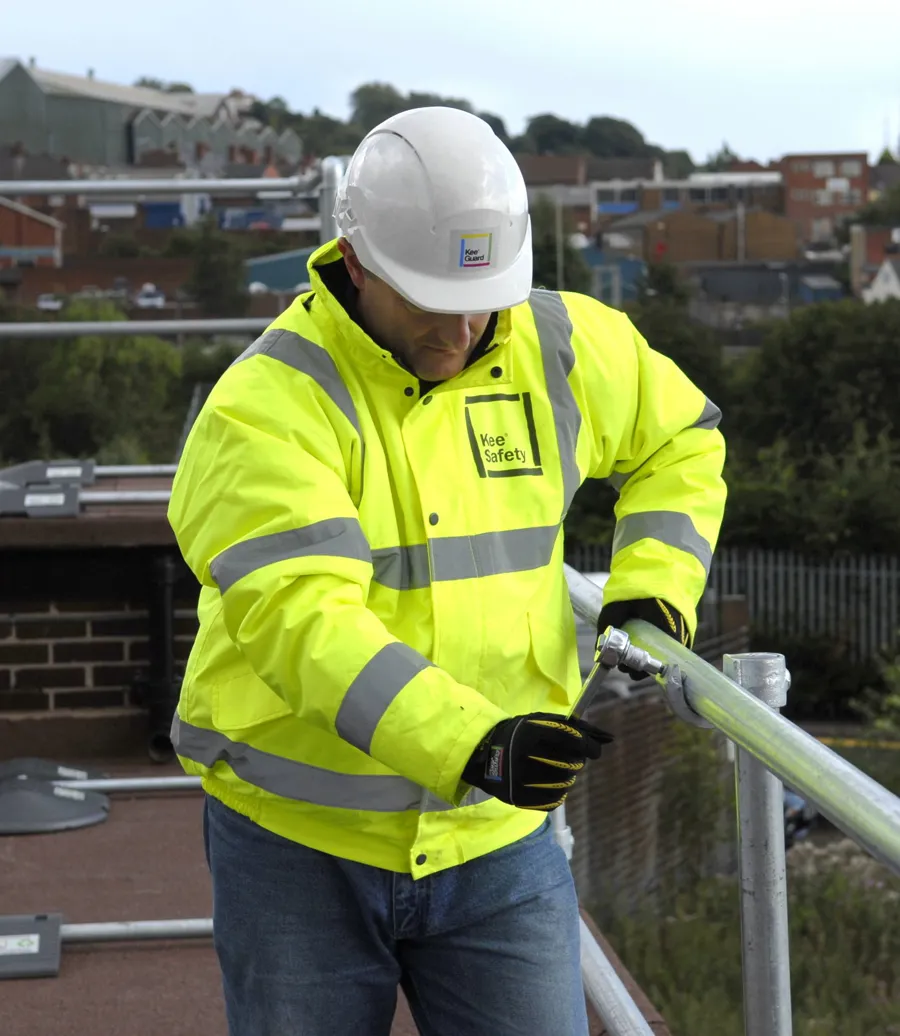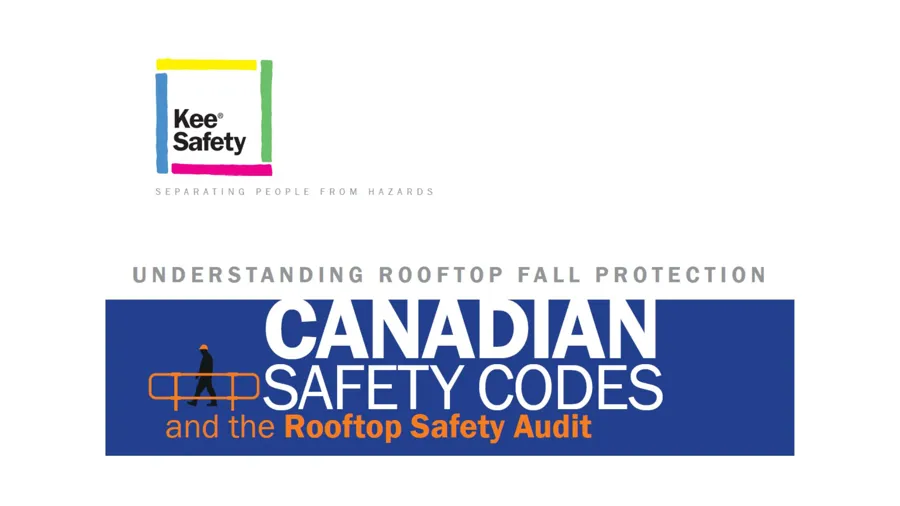
You are visiting the Canada Kee Safety website from United States. Would you like to go to the United States site?
When Paul McCartney of the Beatles penned “Here, There and Everywhere” in 1966, he was not working for the Canadian Centre for Occupational Health and Safety (CCOHS). The sentiment, however, has resiliency as safety guardrails fall protection are an ideal way to protect workers here, there, and everywhere throughout a facility.

People use the terms guardrails and handrails interchangeably, but there is a difference. Whereas a handrail is your helpful companion, a guardrail is a life-saving device. Guardrails are quick and easy to install and provide collective fall protection. That means guardrails protect several people at once and do not require worker training or wearing any special equipment.
The International Building Code (IBC) says that guardrails should be located at or near the open sides of elevated walking surfaces to minimize a fall to a lower level. Handrails can be used with guardrails to support a person walking across ramps, stairs, and flat areas.
Even before one enters a facility, there are prime places for safety railings. Steps and wheelchair ramps are obvious spots. Loading docks with a possibility of a fall should also be protected. Railing systems can separate pedestrians from trucks and other vehicular traffic near sidewalks and in parking areas.
If a worker can fall about a meter into a culvert, work pit, or another floor opening, there should be a guardrail. If there are raised platforms on a machine or access shelves, there should be a guardrail. Ramps and entrances to stairs also can be protected with guardrails and safety gates.
Other areas inside an industrial facility where guardrails should be used—and not just for fall protection—include:
Multilevel facilities with mezzanines, stairs, balconies, catwalks, platforms, and other areas where people are working at heights need fall protection systems. Guardrails at perimeter edges protect against accidental, dangerous falls. A guardrail system may also include a pallet gate for material handling transfer between levels.
An unprotected roof edge is a hazard to anyone up on the roof. Workers may be seen with harnesses attached to lanyards and anchors; however, a roof edge railing system is preferable on flat, low-sloped, and standing seam roofs.
A roof perimeter railing system is easy to install and protects several workers collectively without the need for special equipment and training. Roof guardrails should also be used around domes and skylights that a person can fall through and at roof hatches where workers access the roof.
Canadian Occupational Health & Safety regulations call for employers to provide fall protection to any person working at a height more than 2.4 meters above the nearest safe level or above any moving parts of machinery or any other surface or item that could cause injury upon contact.
Safety guardrails, including those with handrails, are often the first and best solution in many areas throughout the facility. Employers can make their employees glad all over the place with the right fall protection and other safety solutions.

What experts look for when performing a rooftop safety audit and how to improve worker safety with solutions that exceed OH&S compliance.